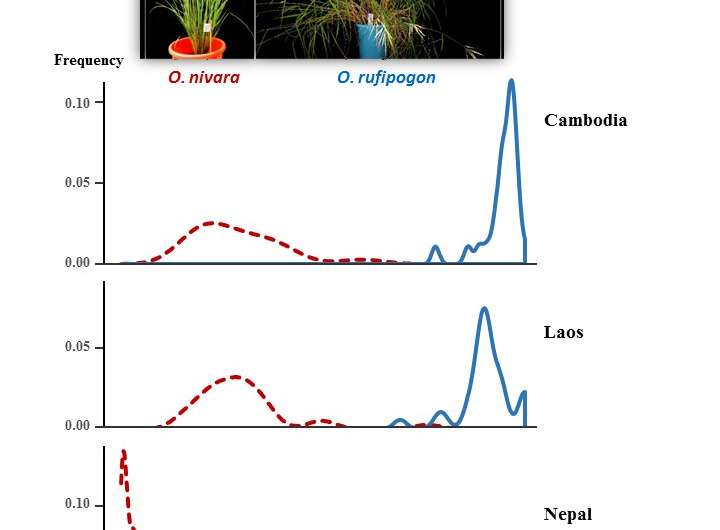Divergence in flowering time contributes reproductive isolation between wild rice species

Speciation is the process by which new species form and is the driving force of biodiversity. Since Darwin published On the Origin of Species, great efforts have been performed to explore the pattern and mechanism of speciation. It is well acknowledged that determining the forms of reproductive isolation and their relative importance in species divergence is of critical importance for our understanding of speciation.
Although substantial investigations on reproductive isolation have been made on numerous model species, relatively limited work has been focused on natural systems that evolve in the wild. Previous studies have shown that, as the direct ancestors of Asian cultivated rice, Oryza rufipogon and O. nivara are a progenitor-daughter species pair and diverged very recently (roughly 150 thousand years) and provide a feasible model to study reproductive isolation and the underlying mechanism.
Here, researchers chose three pairs of sympatric populations of the two species from Nepal, Cambodia and Laos to have performed on them 238 combinations of artificial crossing, including the combinations between species, between populations within species, and between individuals within populations. On this basis, they estimated the seed set of crossing pollinations, F1 viability and fertility to evaluate the post-zygotic reproductive isolation. In addition, researchers collected the flowering time data of these populations censused in their previous common experiment to assess the pre-zygotic reproductive isolation.
The results showed that O. nivara flowered on average 80 days earlier than O. rufipogon with non-overlap in flowering peak between sympatric populations. By contrast, no significant reduction was found in seed set of crossing pollinations, F1 viability and fertility relative to the estimates of the two parents. Researchers also found that interspecies crossing with O. nivara as the mother showed higher seed sets than the combinations with O. rufipogon as the mother and that artificial emasculation during hand pollinations affected the seed set to some extents. Together, this study demonstrated that divergent flowering time caused nearly complete reproductive isolation between two wild rice species and the change of flowering time of the new species O. nivara is an adaption to shifted environments.

More information: Xun Xu et al, Divergence in flowering time is a major component contributing to reproductive isolation between two wild rice species (Oryza rufipogon and O. nivara), Science China Life Sciences (2020). DOI: 10.1007/s11427-019-1678-6
Journal information: Science China Life Sciences
Provided by Science China Press


















